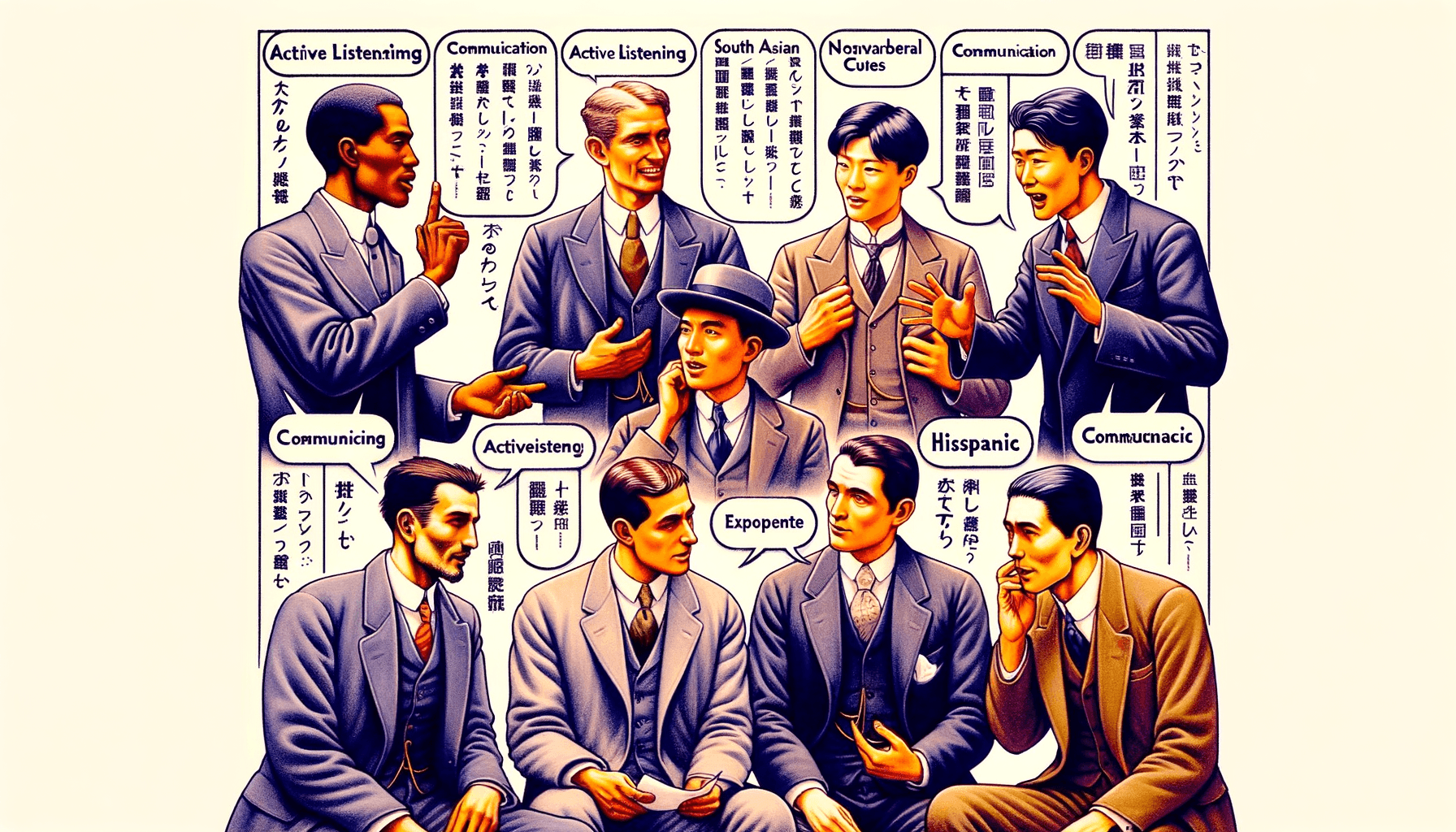The Ultimate Male Communication Strategy Guide for 2025
In today’s rapidly evolving social landscape, effective communication is more vital than ever—especially for men navigating personal and professional relationships. Did you know that men often communicate differently than women, leading to misunderstandings and frustration? This guide is designed to help men refine their communication strategies, offering actionable tips to foster better connections and understanding. Whether in the workplace or at home, mastering communication techniques can improve relationships and result in increased confidence and respect. Join us as we delve deep into the essential components of an effective male communication strategy, tailored specifically for 2025 and beyond. For those eager to further enhance relational dynamics with insightful techniques, consider exploring His Secret Obsession for comprehensive strategies.
The Importance of Communication Skills

Understanding the Role of Communication
Effective communication is the cornerstone of successful personal and professional relationships. In a world that is becoming increasingly interconnected, the ability to articulate thoughts clearly and understand others becomes paramount. Communication serves as the foundation for relationships, fostering trust, and ensuring clarity in exchanges.
Good communication skills not only enhance relationships but also contribute significantly to one’s personal and career advancements. Active listening ensures that you grasp the nuances of conversations, which fundamentally enhances relational dynamics across various contexts.
To explore how psychological insights can enhance communication in your relationships, check out His Secret Obsession, which is built on understanding deep-seated desires in communication.
The Benefits of Developing Communication Skills
Investing in communication skills yields numerous benefits:
- Enhancing relationships: Effective communication helps in mitigating conflicts and misunderstandings, thus enriching personal connections and professional interactions.
- Building confidence: When you master the art of expressing yourself clearly, confidence flourishes. This confidence is essential not just for personal relationships but is a key ingredient for professional success and advancement.
- Professional image: Communicating effectively can bolster your professional image, presenting you as competent and agreeable, which is crucial during interviews, meetings, or while networking.
Explore more about aligning communication strategies with personal growth through His Secret Obsession, which offers unique insights into relational success.
Understanding Male Communication Styles

Key Male Communication Traits
When it comes to understanding male communication styles, it’s crucial to highlight both directness and emotional expression.
Directness vs. Indirectness: Many men tend to communicate in a more direct manner. They often prefer to get straight to the point, which can sometimes be perceived as bluntness or insensitivity. This straightforward approach can be helpful in many situations, particularly in professional settings where clarity is valued. However, it can also lead to misunderstandings when the recipient expects a more nuanced or indirect conversation.
The Role of Emotions and Logic: In many cases, male communication tends to prioritize logic over emotional expression. While emotions are undoubtedly present, they might not be verbally articulated as frequently as they are in female communication styles. This emphasis on logical reasoning can be beneficial in decision-making contexts but can sometimes obscure the emotional aspects of communication, making it harder for men to express vulnerability or connect on an emotional level.
Embrace techniques that delve into male communication psychology further through His Secret Obsession, which offers valuable insights into overcoming communication challenges.
Overcoming Stereotypes
Breaking down stereotypes is essential for improving communication. Men’s communication styles are often surrounded by misconceptions that need to be addressed:
Addressing Common Stereotypes: There is a prevalent stereotype that men are emotionally detached or uninterested in relationships. In reality, many men value deep connections and relationships but may struggle to express their emotions publicly due to societal expectations. Challenging this stereotype can create space for healthier communication.
Understanding Societal Norms: Societal norms play a significant role in shaping how men communicate. From a young age, many boys are taught to be tough and suppress their emotions. This conditioning can lead to difficulties in expressing feelings in adulthood. Understanding how these norms impact communication can help men break free from them and foster more open interactions in both personal and professional settings.
Unlock deeper relational insights with His Secret Obsession, which can help shift and transform these deeply ingrained communication norms.
Strategies for Effective Communication

Active Listening as a Tool
Active listening is the foundation of effective communication. It involves being fully engaged when someone is speaking, not just hearing the words but understanding the message behind them. Here are some key aspects of active listening:
The Importance of Truly Listening: When we listen actively, we not only reinforce our relationships but also foster an environment of trust and empathy. It shows the speaker that their thoughts and feelings matter, which can significantly strengthen your bond.
Techniques for Practicing Active Listening:
Focus Completely: Remove distractions—be it your phone, a busy environment, or your own racing thoughts. Give them your undivided attention.
Reflect and Clarify: Repeat back what you understand with phrases like, “So, you feel that…” This not only confirms your understanding but encourages the speaker to elaborate if needed.
Uncover how mastering these listening techniques can complement relational dynamics through His Secret Obsession.
Expressing Thoughts and Emotions Clearly
Being able to express your thoughts and emotions clearly is equally crucial. It isn’t just about stating facts but also about sharing experiences in a way that includes the recipient in your feelings. Here are some tips:
- Tips for Effective Verbal Expression:
- Be Direct but Kind: Use clear, straightforward language. Instead of saying, “I think we have a problem,” try phrasing it as, “I feel worried about our recent conversations. Can we talk about it?”
- Utilize Non-Verbal Communication: Your body language, tone, and gestures play a pivotal role. For instance, maintaining eye contact shows engagement, while a gentle touch can convey empathy.
Asking Open-Ended Questions
Open-ended questions can lead to deeper conversations that strengthen relationships. They encourage the other person to share more about their thoughts and feelings. Here’s how to effectively use them:
- How to Encourage Deeper Conversations Through Questioning:
- Examples of Effective Open-Ended Questions:
- “What has been on your mind lately?”
- “How do you feel after today’s meeting?”
These questions invite the other person to share their experiences and feelings more freely.
Discover more about applying emotional intelligence through storytelling within relationships by exploring His Secret Obsession.
Managing Conflict Through Communication

Understanding Conflict Triggers
Managing conflict effectively begins with recognizing what triggers disputes in conversation. Here are some key elements to help understand these triggers:
Identifying Common Triggers in Conversations:
Conflicts can arise from many situations, such as differing perspectives, miscommunication, or emotional responses to statements. Understanding that certain topics or tones can lead to heightened emotions is essential. Men, for instance, may find discussions about their feelings particularly triggering, as societal norms often dictate how emotions should be expressed.Recognizing Personal Responses to Conflict:
It’s crucial to be aware of your own reactions during disagreements. Do you tend to withdraw, raise your voice, or become defensive? Acknowledging your instinctual responses can help you take a step back and approach the conversation more rationally. By understanding your triggers, you can better manage your behavior in heated discussions.
Understanding and applying conflict resolution techniques can be expanded further through His Secret Obsession.
Techniques for Conflict Resolution
Once you understand the triggers, you can employ several strategies to resolve conflicts effectively:
De-escalation Strategies:
Whenever a conversation becomes heated, utilize techniques to calm the situation. Take a deep breath, count to ten, or suggest a brief break to gather your thoughts. This pause can prevent the discussion from devolving into an argument. For example, instead of responding to a heated comment with frustration, acknowledge the other person’s feelings and suggest drawing away for a moment.Using ‘I’ Statements to Express Feelings Without Blaming:
When discussing matters that evoke strong emotions, focus on expressing your feelings rather than accusing the other party. For example, say, “I feel upset when I hear you raise your voice,” instead of, “You are always yelling at me!” This approach reduces defensiveness and opens the door for understanding.
Following Up After Conflicts
Addressing resolution is just as important as managing the conflict itself:
The Importance of Resolution and Understanding:
After a conflict, returning to the issue to ensure it has been resolved satisfactorily is key. Engage in a follow-up conversation where each party can share thoughts on the resolution process and whether their needs have been met. Making sure both sides feel heard solidifies the foundation for future communications.Techniques for Re-establishing Connection Post-Conflict:
After a disagreement, take time to reconnect. This a simple gesture like going for coffee together or sharing a light-hearted moment can ease residual tension. Acknowledging that conflicts may arise but reaffirming your commitment to open communication and understanding can strengthen the relationship.
To see how these strategies can enhance your relationship communications, discover the techniques within His Secret Obsession.
By employing these strategies, you can enhance your conflict resolution skills, paving the way for more effective and respectful communication in all areas of your life.
The Impact of Nonverbal Communication

Understanding Body Language
Nonverbal communication, often referred to as body language, plays a crucial role in how we convey and interpret messages. Whether we are aware of it or not, our nonverbal cues—gestures, facial expressions, posture, and eye contact—speak volumes and can significantly influence the effectiveness of our communication. In fact, research suggests that nonverbal signals can account for up to 93% of the total communication impact in some contexts, while verbal communication represents only 7%. This highlights the significance of understanding body language for fostering meaningful connections and enhancing interpersonal dynamics.
When it comes to male communication, leveraging nonverbal signals effectively can aid in establishing rapport and conveying intentions clearly. For example, maintaining appropriate eye contact can signal interest and confidence, while crossed arms may betray defensiveness or discomfort. It’s essential for men to cultivate an awareness of their own body language as well as those of others to decode underlying feelings and motivations. Nonverbal cues like smiles, nods, or leaning forward can indicate engagement and empathy, enhancing the quality of interactions.
Harness the advantages of body language insights by diving deeper into the complementary resources like His Secret Obsession.
Aligning Verbal and Nonverbal Messages
The alignment between verbal and nonverbal messages is critical for building trust and clarity in communication. Consistency between what is said and the accompanying body language helps convey sincerity and reduces the likelihood of misunderstandings. For instance, if someone verbally expresses enthusiasm but their body language appears closed off—such as avoiding eye contact or turning away—listeners may feel that there is a disconnect, leading them to question the speaker’s honesty or intentions.
Mistakes to avoid include using contradictory signals; for example, giving a compliment while appearing disinterested may send mixed messages and confuse the listener. Instead, it’s beneficial to adopt gestures that reinforce verbal messages, such as open palms to convey transparency and support, or leaning slightly toward the person speaking to demonstrate attentiveness. Practicing mindful awareness of both verbal and nonverbal cues can significantly enhance communication effectiveness, especially in contexts where clarity and mutual understanding are paramount.
Improve and fine-tune these alignment skills further with strategies from His Secret Obsession.
By mastering the intricacies of nonverbal communication and ensuring that our body language aligns with our spoken messages, we can foster better relationships, navigate challenges more effectively, and connect on a deeper level—transforming not just how we communicate but how we relate to others in all aspects of life.
Cultural Considerations in Communication

Recognizing Cultural Differences
Understanding the nuances in communication styles is essential as cultural backgrounds significantly influence how we express ourselves and interpret others. Here are some key points:
- Impact of Cultural Backgrounds on Communication Styles: Different cultures prioritize various communication styles, such as directness versus indirectness, which can lead to misunderstandings. For instance, some cultures favor straightforward communication, while others might see it as rude or aggressive. Understanding these differences is vital for effective interaction.
- Approaches for Effective Intercultural Communication: It’s essential to cultivate awareness and adaptability. When engaging with individuals from diverse backgrounds, do your homework on cultural norms and communication preferences. Utilize active listening and clarifying questions to ensure mutual understanding.
Strategies for Inclusivity
To communicate effectively in diverse environments, consider the following strategies:
- Building Awareness and Adaptability in Diverse Environments: Recognize that your default communication style may not resonate universally. Be open to adjusting your approach based on the cultural context and the preferences of the individuals with whom you’re communicating.
- Using Cultural Knowledge to Enhance Communication Efficacy: Develop familiarity with the habits and customs of other cultures. For instance, certain gestures may have varying interpretations across cultures. Approaching conversations with cultural knowledge not only fosters respect but also enhances collaboration and trust.
Broaden your understanding of cultural communication dynamics by leveraging the comprehensive approach of His Secret Obsession.
In conclusion, mastering a comprehensive male communication strategy involves recognizing the unique traits of male communication, developing essential skills, and being mindful of cultural dynamics. By applying the strategies outlined in this guide, men can improve their communication effectiveness, lead more fulfilling personal and professional lives, and foster healthier relationships. Start today—embrace these techniques and watch as your interactions transform. Engage with peers, seek feedback, and practice these skills regularly to become a more effective communicator in all facets of life.
For an expanded understanding of male communication strategies, consider exploring His Secret Obsession, which provides additional tools for navigating relationships.

